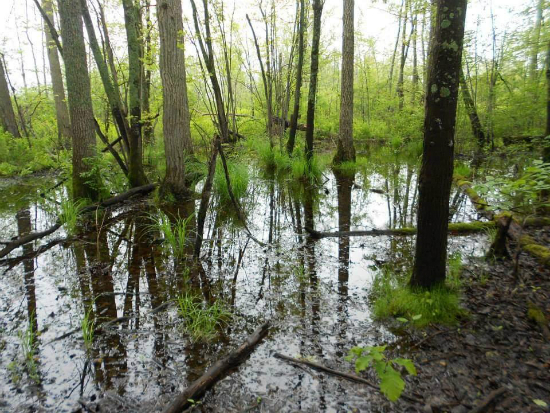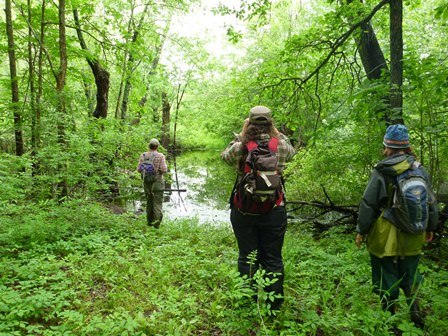wetlands
Restore
Wetland restoration is the process of returning a degraded wetland to an approximation of its pre-disturbance condition. The United States lost over half of its wetlands since European colonization in the early 1600s, and Vermont lost as much as 35 percent. Until recently, wetlands were seen as obstacles to development, agriculture, and travel, and were systematically drained and altered. Conversion of wetlands was accepted practice as recently as the 1950s, and was even incentivized by government policies (see the
Conserve and Protect
Wetland conservation and protection is aimed at preventing the loss of wetlands and the functions and values they provide. The United States lost over half of its wetlands since European colonization in the early 1600s, and Vermont lost as much as 35 percent. Until recently, wetlands were seen as obstacles to development, agriculture, and travel, and were systematically drained and altered. Conversion of wetlands was accepted practice as recently as the 1950s, and was even incentivized by government policies.
Learn
Program Reports
Below are reports produced by the Vermont Wetlands Program
2023 Restoration Monitoring Report: This report summarizes the cumulative findings of the Program’s restoration site monitoring project through the end of 2023.
Hydrophytic Vegetation
Wetland plants, or hydrophytic "water loving" vegetation, are those plants which have adapted to growing in the low-oxygen (anaerobic) conditions associated with prolonged saturation or flooding. These plants have adapted to anaerobic soil conditions by evolving alternative methods of collecting oxygen such as the hypertrophied lenticels in the bark of speckled alder; the hollow stems of rush and grass species; and the air filled cells (aerenchyma) in the roots of cattails.
Wetland Hydrology
 Wetland hydrology refers to the timing and extent of flooding or soil saturation and is considered to be the "driving force" in wetland formation. Rainfall, soil permeability, position in the landscape, surrounding land use, and type of vegetation all influence the hydrology of a wetland.
Wetland hydrology refers to the timing and extent of flooding or soil saturation and is considered to be the "driving force" in wetland formation. Rainfall, soil permeability, position in the landscape, surrounding land use, and type of vegetation all influence the hydrology of a wetland.
Wetland Identification and Delineation
The saturated or seasonally saturated conditions in wetlands create an environment that favors the growth of specifically adapted wetland plants (hydrophytic vegetation) and promotes the development of wetland soils (hydric soils).
Wetland Types
Vermont contains a great diversity of wetlands, ranging from open water habitats to rich forested swamps. Wetlands vary because of differences in hydrology, parent soil material, historical land use, topography and other factors. These differences make each wetland unique in its appearance, biota, and function in the landscape. Some general wetland types present in Vermont include open water wetlands, emergent wetlands, scrub-shrub wetlands, forested wetlands, wet meadows, peatlands, and vernal pools.

 Vermont Wetland Training and Educational Opportunities
Vermont Wetland Training and Educational Opportunities


